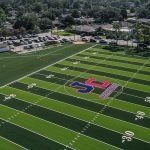Ducks Unlimited was awarded a North American Wetlands Conservation Act grant to enhance over 5,728 acres of wetland habitat in Chambers and Jefferson counties along the Texas coast.
the Chenier Plain of Texas.
Emergent wetlands and coastal marshes of the Texas Gulf Coast provide critical migration and wintering habitat for millions of migratory birds. However, the region has experienced tremendous habitat alterations and wetland losses due to several factors including development pressures, urbanization, decreased rice agriculture, altered local and regional hydrology, and saltwater intrusion. The remaining wetland habitats within the Texas Gulf Coast support a rich diversity of wildlife species and are vital to wildlife population sustainability.
Under this proposal, partners will restore and enhance 5,728 acres of freshwater and coastal wetlands and associated transitional upland habitats including native grasslands on public lands within the Chenier Plain of Texas. Grant funds will also be used to restore and enhance a total of 2,639 acres of fresh / intermediate coastal marsh on McFaddin National Wildlife Refuge, Anahuac NWR, and J.D. Murphree Wildlife Management Area.
Much of the infrastructures on the public lands within the region are “legacy” features that are degraded, inefficient or altogether inoperable. Constructed decades ago, the managed wetland units on the federal and state lands listed in the proposal provide less than optimal habitat values for wintering waterfowl. The project will replace degraded culverts and pipes with modern water control structures, improve existing levees, and construct new levees to provide dependably managed additional flooded habitat.
Grant funding will also be used to construct terraces in a subsided marsh on Anahuac NWR. Terraces provide suitable conditions to re-establish submerged aquatic and emergent vegetation in the degraded marsh by reducing erosion and turbidity generated from wind-driven wave action.













